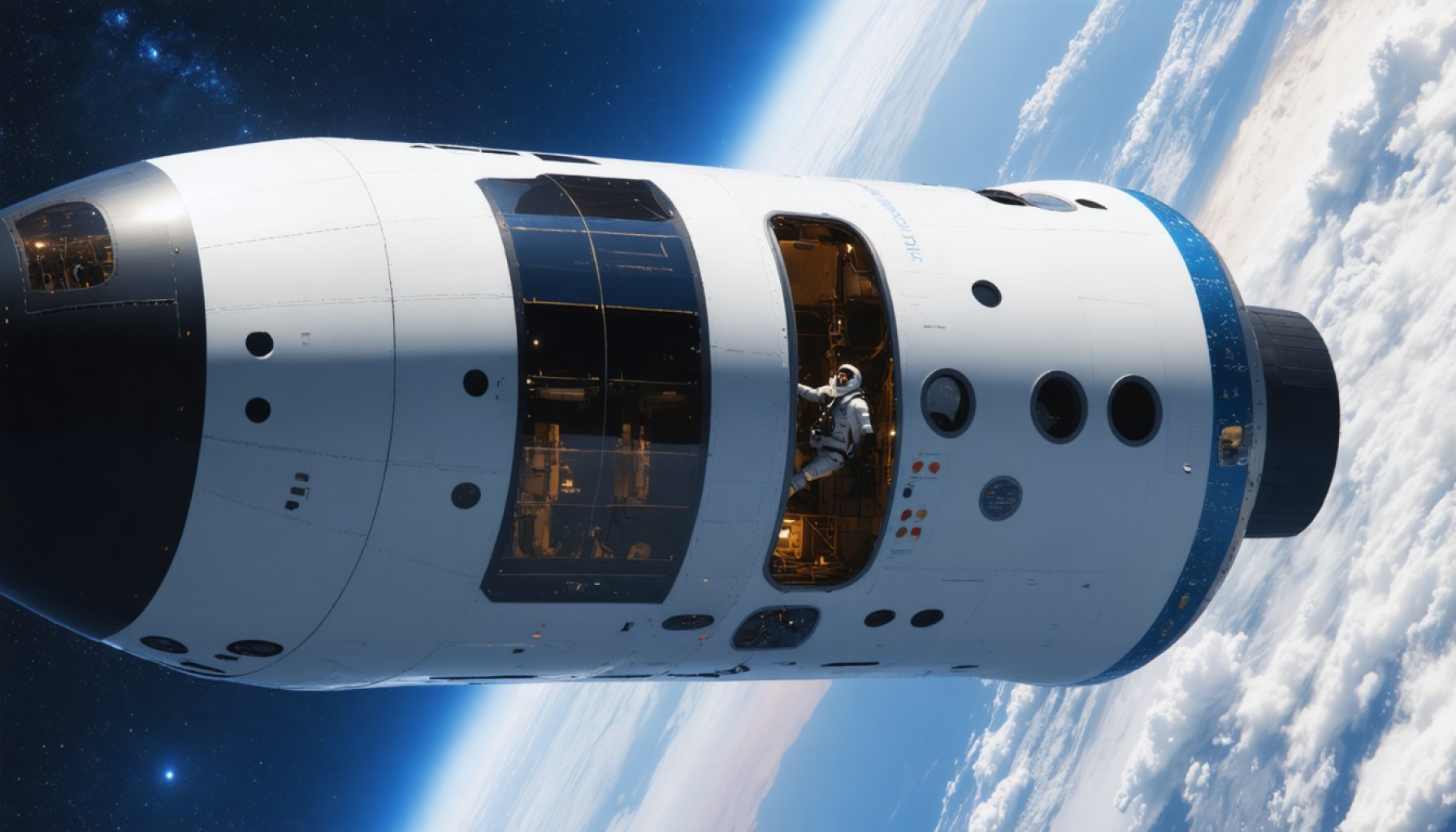
- Blue Origin’s groundbreaking mission will feature an all-female crew, including Katy Perry and Gayle King, symbolizing aspiration and ambition.
- The diverse crew, comprising producers, scientists, and journalists, showcases women’s prowess in traditionally male-dominated fields.
- The mission highlights the dual narrative of glamour and the struggle to overcome systemic barriers in space exploration.
- Aisha Bowe, a former NASA engineer, and journalist Lauren Sanchez exemplify the blend of scientific and societal insights aboard.
- Echoing pioneers like Eileen Collins, the mission underscores the challenges women face in navigating technical demands alongside societal scrutiny.
- The mission sparks a broader dialogue on inclusivity in space, emphasizing that opportunity should extend beyond the privileged few.
- The journey calls for systemic change, suggesting space exploration as a pursuit of equality, not just a privilege.
A powerful thrum ripples through the crisp morning air as Blue Origin prepares to launch its most groundbreaking mission yet—a voyage of aspiration, ambition, and trailblazing audacity featuring an all-female crew. This spring, a cadre of exceptional women, including pop icon Katy Perry and renowned media figure Gayle King, will defy gravity and expectations aboard a spacecraft headed for the stars, mirroring Valentina Tereshkova’s iconic flight that broke barriers in 1963.
Within the cocoon of this spacecraft, the diverse group embodies a mosaic of prowess and inspiration. Producers, scientists, activists, and journalists stand shoulder to shoulder, their intertwining narratives a testament to the boundless possibilities of women in fields historically dominated by men. Among them, Aisha Bowe, a former NASA engineer, represents the scientific prowess of the team, while journalist Lauren Sanchez brings an incisive perspective on the societal implications of such an undertaking.
While this voyage is clad in a veneer of glamour, with Perry’s dreams for her daughter soaring as high as the spacecraft itself, it also offers a poignant reflection on the complexities of women’s success stories. Aboard the flight, each woman is a storyteller, crafting a narrative that echoes the memoirs of pioneering astronauts like Catherine Coleman and Mae Carol Jemison, who spoke of destiny and belonging amid the stars.
These memoirs, though awe-inspiring, underline a reality frequently glossed over: the monumental struggle to transcend systemic barriers. As these women break through the stratosphere, their journey symbolizes more than just physical ascent; it challenges us to reconsider how opportunities in space—an arena often seen as the ultimate frontier—are tangled with privilege and fortuity.
The exhilarating tale of Eileen Collins, the first woman to pilot and command a space shuttle, exemplifies the scrutiny and performance pressure faced by women who venture where few female figures have trodden. Her account emphasizes the dual task that these pioneers confront: mastering the technical demands of spaceflight while navigating the weight of societal expectations and stereotypes.
Today’s mission invites a fresh narrative—one that confronts both the privilege and unique barriers circumventing this flight’s glossy image. As the world casts its eyes skyward, this journey beckons a deeper dialogue on how to make such opportunities more inclusive, allowing a wider array of voices to participate in humanity’s celestial sojourn. Beyond the marvel and magnitude of this airborne odyssey lies a critical conversation: How can the tales of these women spur systemic change to ensure that the sky is no longer the limit just for a chosen few?
In embracing this dialogue, we move closer to a vision of space exploration not merely as a privilege of the elevated few, but a realm where dreams—fueled by determination and equality—propel us all toward our own stars.
Unlocking the Stars: How Blue Origin’s All-Women Crew Redefines Space Exploration
Expanding Beyond the Source: The Future of Women in Space Exploration
Blue Origin’s historic mission, featuring an all-female crew with luminaries such as Katy Perry and Gayle King, has transcended its surface story of celebrity and adventure to immerse us in a dialogue about gender equality, diversity, and inclusion in space exploration. This mission, a tapestry of dreams and representation, mirrors similar milestones, like Valentina Tereshkova’s trailblazing flight in 1963.
Pressing Questions Answered
Why is this mission significant?
This mission signifies a step forward in challenging traditional gender roles within space sectors. By showcasing women from diverse professional backgrounds, it underscores the message that space is not just an arena for scientists and engineers but also for artists, media figures, and activists.
What impact does this have on future space missions?
With roles ranging from scientists like Aisha Bowe to journalists like Lauren Sanchez, this initiative encourages young women globally to pursue careers in STEM—science, technology, engineering, and mathematics—and challenges the gender biases deeply entrenched in these fields. Increasing representation in such high-profile missions can inspire systemic changes in educational and professional settings.
Are there systemic barriers in space exploration for women, and how can they be addressed?
Historically, women have faced significant barriers in entering and succeeding in STEM fields, including limited access to resources, mentorship, and industry biases. Addressing these involves systemic changes, such as improving educational access and industry policies emphasizing gender equality. Companies and governments must work together to create pathways ensuring that opportunities in space exploration become more equitable.
Industry Trends and Predictions
– Growth in Inclusive Policies: The aerospace sector is likely to see an uptick in initiatives and policies aimed at diversifying the workforce, resulting in more inclusive recruitment and career development programs.
– Increased Female Participation: We can anticipate a rise in the participation of women in future space missions, including leadership roles, which can help dismantle existing stereotypes.
Pros & Cons Overview
Pros:
– Inspiration for the Next Generation: Showcasing women in space exploration roles inspires young girls to pursue similar paths.
– Diverse Perspectives: Inclusivity brings a range of perspectives crucial for innovation and problem-solving in space missions.
Cons:
– Cynicism and Scrutiny: High-profile missions can sometimes be criticized as publicity stunts rather than genuine efforts for gender equality.
– Societal Stereotypes: Persistent stereotypes may overshadow women’s success, associating it with privilege rather than merit.
Real-World Use Cases & Life Hacks
– Mentorship Programs: Women who succeed in STEM should engage in mentorship endeavors to support and guide the upcoming generation.
– Educational Workshops: Schools can hold workshops emphasizing the significance of STEM careers with female role models.
Conclusions and Recommendations
To ensure the legacy of Blue Origin’s all-female flight influences future generations, it’s imperative to focus on educational reforms, policy changes, and mentorship opportunities that open doors for women globally. As this mission lifts off, it is a call to action: let us all contribute to a future where boundaries no longer dictate who gets to touch the stars.
For more on space exploration and innovation, check out Blue Origin.



